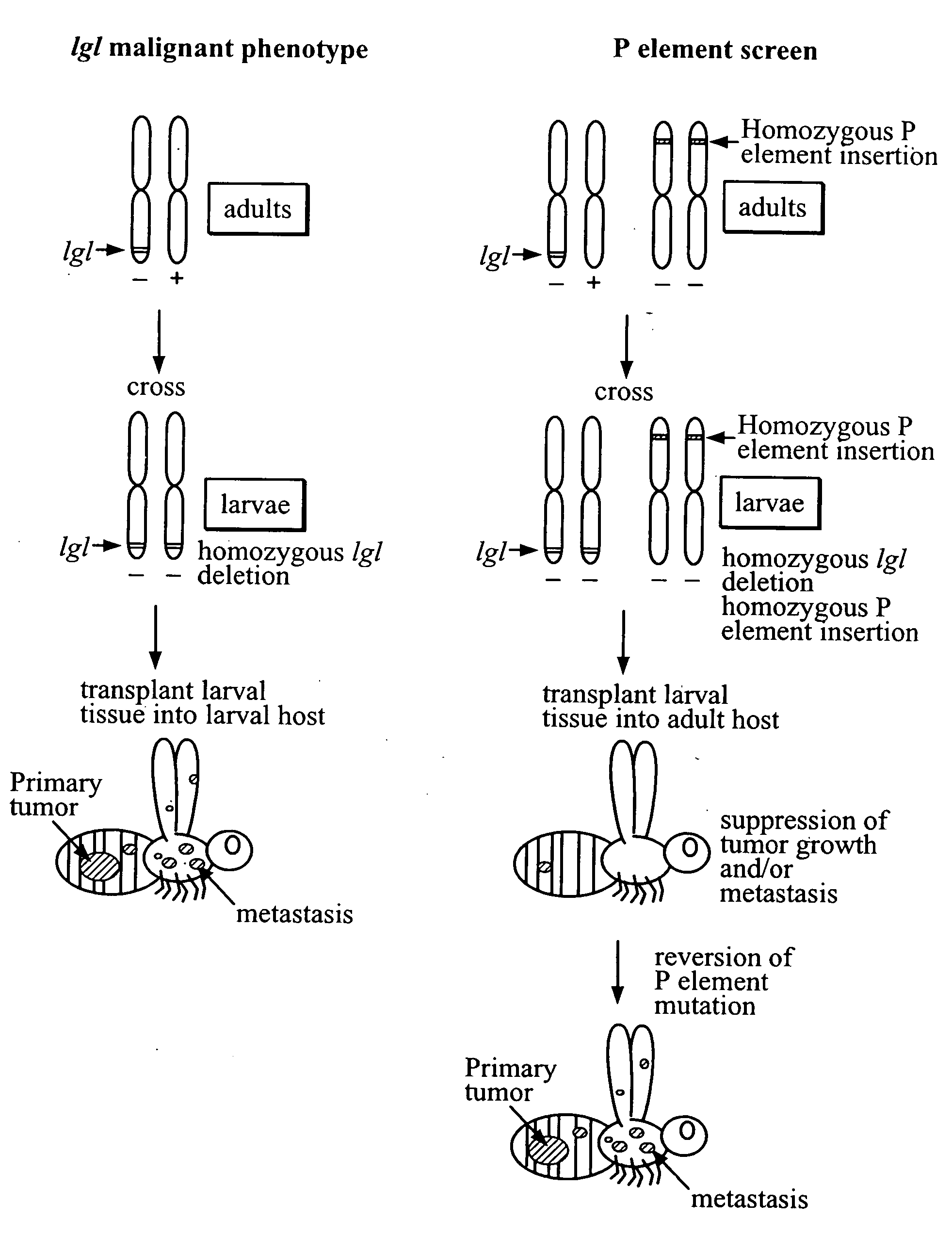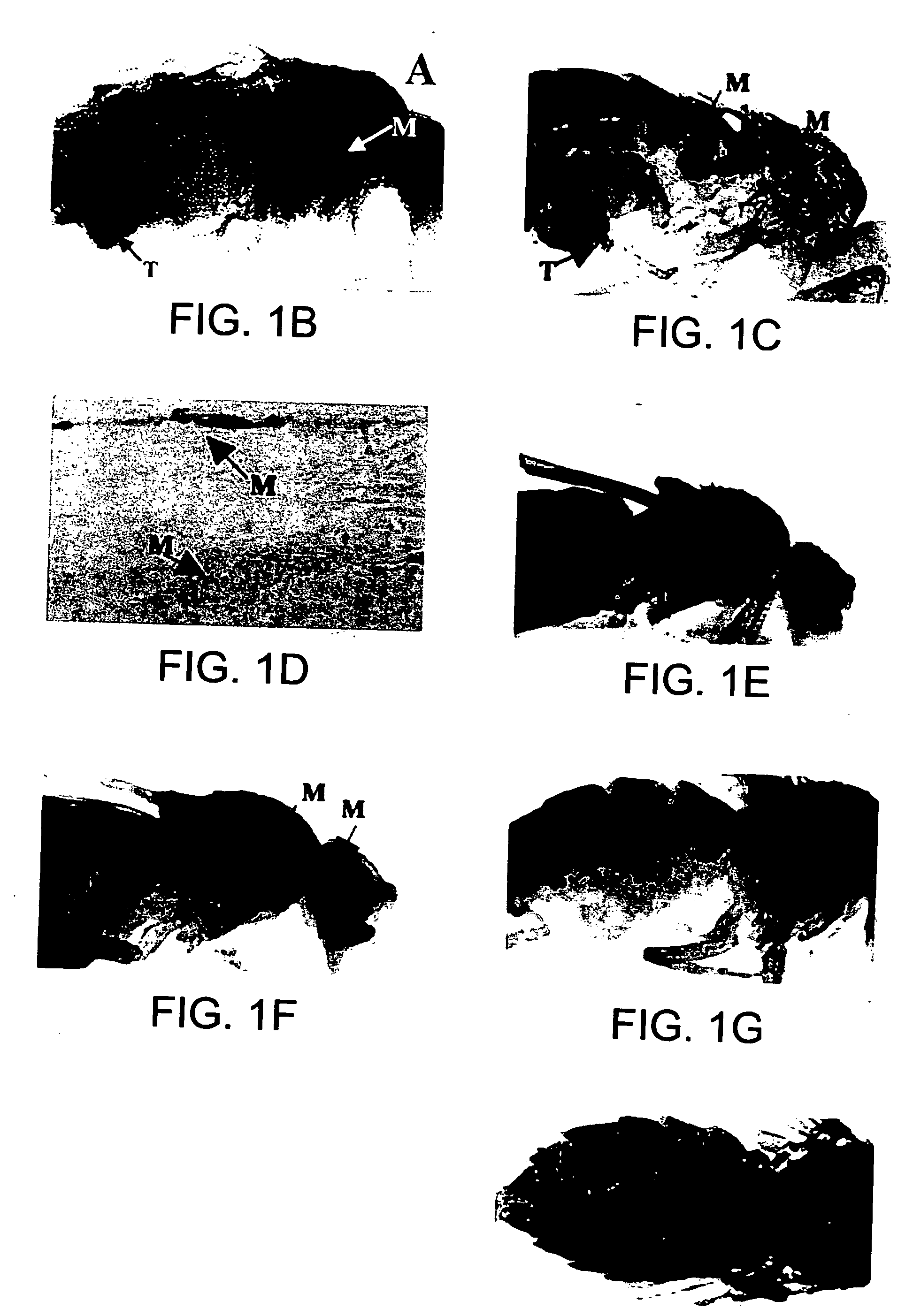High throughput screening for cancer genes
a cancer gene and high throughput technology, applied in the field of high throughput screening systems, can solve problems such as non-tissue specific abnormal cell proliferation
- Summary
- Abstract
- Description
- Claims
- Application Information
AI Technical Summary
Benefits of technology
Problems solved by technology
Method used
Image
Examples
example 1
[0121] Flies were reared in shell vials on standard cornmeal, molasses, and yeast medium at 20° C. Second chromosome lethal mutations were maintained over balancers marked with y+ and CyO mutations in stocks that were homozygous for the y mutation on the X-chromosome. Mutant larvae could be identified on the basis of expression of the y mutant phenotype.
[0122] Generation of Homozygous Mutations that Disrupt Metastasis
[0123] P-element insertion mutations were generated in a l(2)gl heterozygous background. A PlacWP-element inserted on the X chromosome was randomly mobilized in a heterozygous lethal giant larvae background by combination with the ‘jumpstarter’ P-element strain P(ry+; 02-3). Autosomal insertions were mapped by standard genetic methods using a yw / yw;+ / +;+ / + stock and examining the segregation of CyO and the w+marker. A homozygous P-element stock was established from each independent insertion.
[0124] Homozygous l(2)gl larvae were isolated from P-element lines carrying ...
example 2
[0152] Adult βgalnl hosts transplanted with armadillo-lacZ marked l(2)gl brain fragments were treated with 0; 0.556; 5.56; and 55.6 μg / ml of the PI-3 K inhibitor, LY294002 (Sigma), by adding drug to fly media. Flies were cultured for 21 days on drug-containing food and stained for the presence of β-galactosidase. Primary tumor size was determined by counting the cells dissociated from tumors. See, e.g., FIG. 5.
PUM
| Property | Measurement | Unit |
|---|---|---|
| Temperature | aaaaa | aaaaa |
| Composition | aaaaa | aaaaa |
| Size | aaaaa | aaaaa |
Abstract
Description
Claims
Application Information
 Login to View More
Login to View More - R&D
- Intellectual Property
- Life Sciences
- Materials
- Tech Scout
- Unparalleled Data Quality
- Higher Quality Content
- 60% Fewer Hallucinations
Browse by: Latest US Patents, China's latest patents, Technical Efficacy Thesaurus, Application Domain, Technology Topic, Popular Technical Reports.
© 2025 PatSnap. All rights reserved.Legal|Privacy policy|Modern Slavery Act Transparency Statement|Sitemap|About US| Contact US: help@patsnap.com



